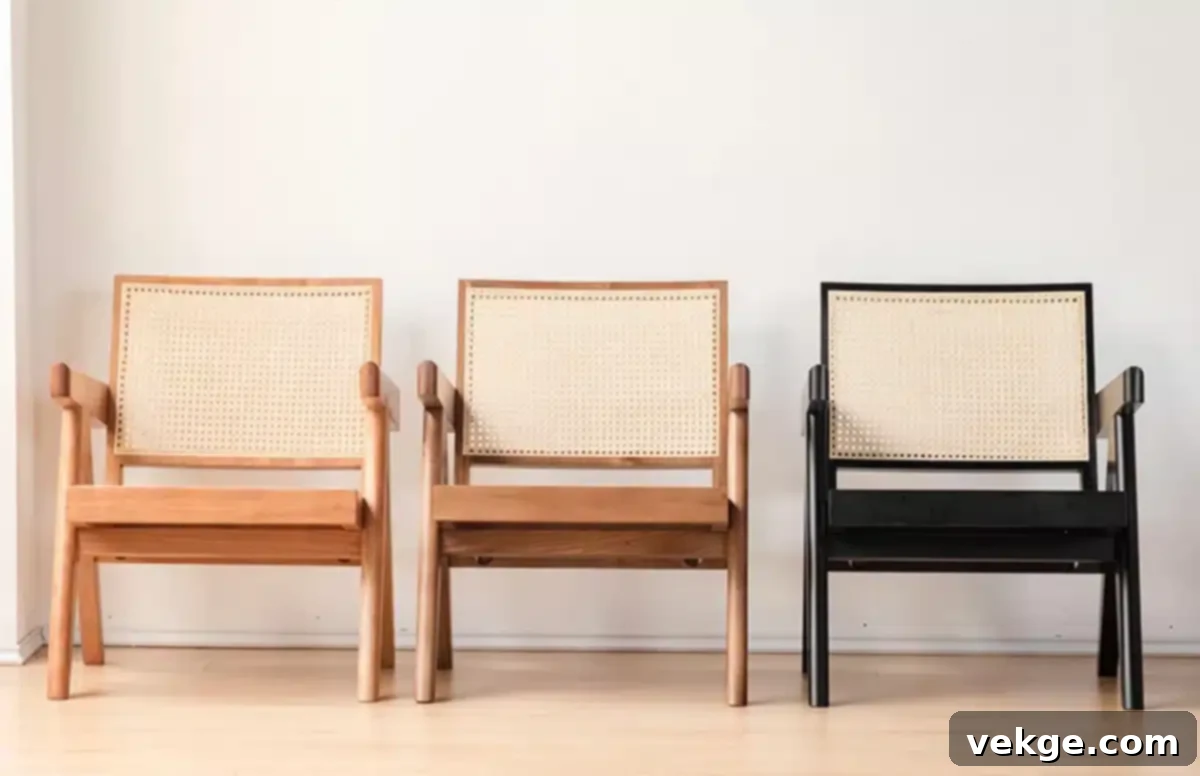The Enduring Legacy of Pierre Jeanneret Chairs: Design Icon and Modern Statement
Have you ever found yourself admiring a simple yet profoundly elegant wooden chair in a design magazine, a celebrity home tour, or even a chic cafe, and wondered about its origins? Chances are, you’ve encountered a Pierre Jeanneret chair. These iconic pieces, recognized for their distinctive V-shaped legs and cane elements, have transcended their humble beginnings to become highly sought-after staples in contemporary design. But what is it about these chairs that makes them so special, and why are they experiencing such a tremendous surge in popularity today?
This article delves into the fascinating world of Pierre Jeanneret, an extraordinary Swiss architect and furniture designer whose vision of functional simplicity left an indelible mark on the design industry. We’ll explore his life, his influential collaboration with his cousin Le Corbusier, and the groundbreaking project in Chandigarh, India, where these now-famous chairs first took shape. Whether you’re a seasoned collector hunting for an authentic vintage piece or an enthusiast looking to integrate this timeless aesthetic into your home, read on to discover everything you need to know about the Pierre Jeanneret chair – including where to find both original and high-quality replica options.
Who Was Pierre Jeanneret? The Visionary Behind the Chandigarh Project
To truly appreciate the chairs, one must first understand the man behind them. Pierre Jeanneret was born in Geneva, Switzerland, in 1896. After honing his skills at the prestigious École des Beaux-Arts, he quickly established himself as a talented architect. His professional life became inextricably linked with that of his cousin, the legendary architect Charles-Édouard Jeanneret-Gris, better known as Le Corbusier. Their partnership began in 1922, blossoming into a formidable creative force that shaped the landscape of modern architecture and design.
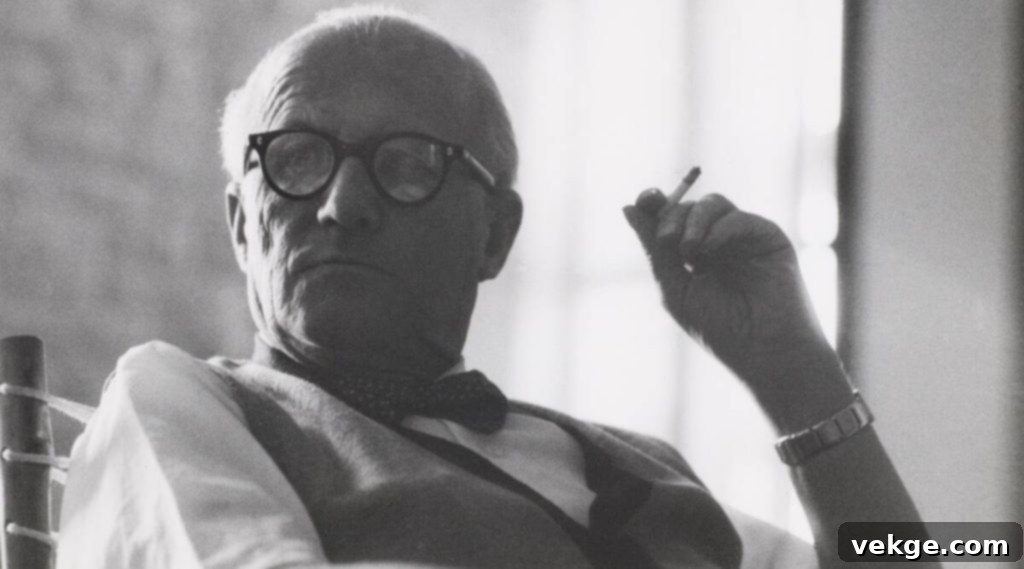
Together, and often with other influential designers like Charlotte Perriand, they championed a new architectural ethos. In 1926, Le Corbusier and Jeanneret co-authored “Five Points Towards New Architecture,” a seminal paper that outlined their core principles – advocating for features like pilotis (columns supporting the building), open-plan layouts, free facades, horizontal windows, and roof gardens. These ideas materialized in iconic structures such as The Villa Savoye, a masterpiece located on the outskirts of Paris, France, which perfectly encapsulated their modernist vision.
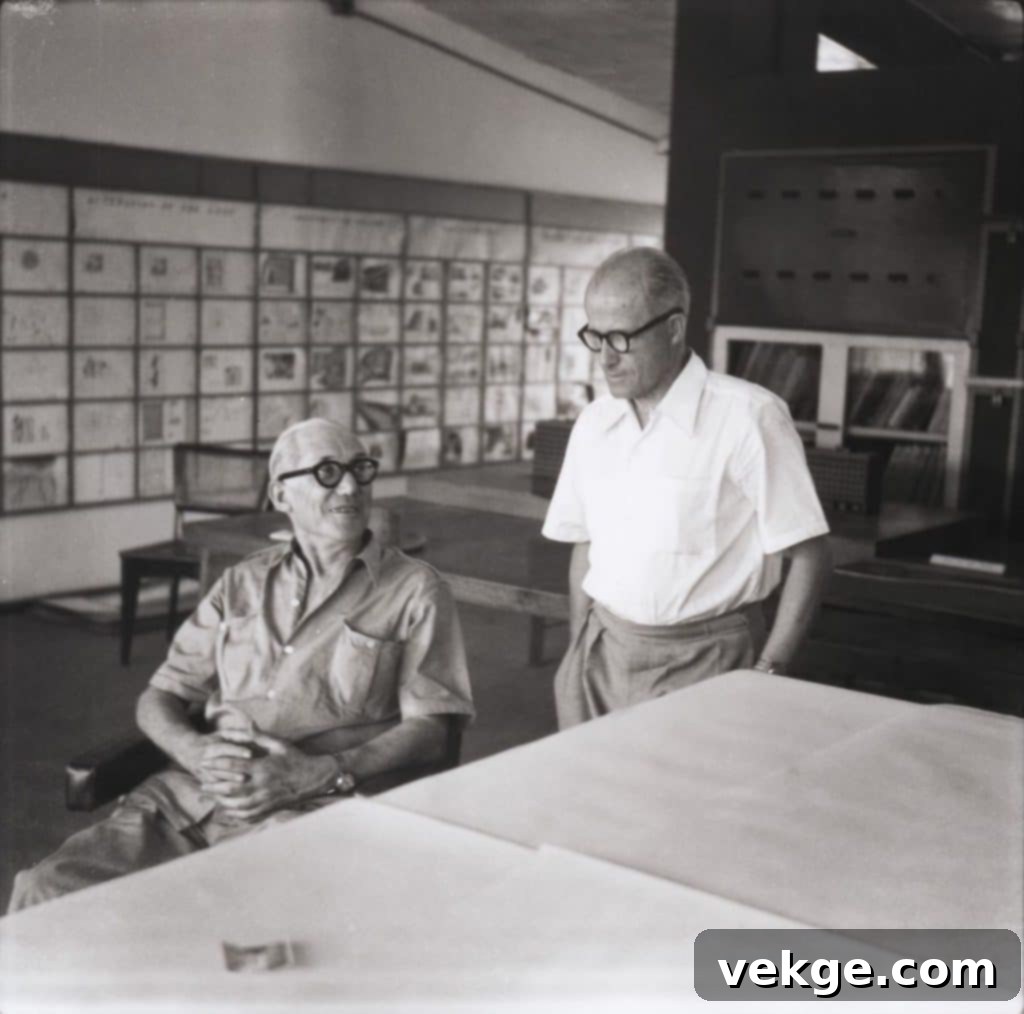
The duo’s collaboration, however, faced a temporary halt during World War II. It was in the post-war era of the 1950s that they reunited for their most ambitious and historically significant project: the design and construction of Chandigarh, the new capital city for the Indian states of Punjab and Haryana. Le Corbusier took the lead on the macro-level planning, orchestrating the layout of government buildings, residential areas, parks, and commercial zones. Pierre Jeanneret, however, was entrusted with the crucial role of overseeing the ground-level execution and implementation of these grand architectural ideas. This included managing construction, designing housing for local residents, and, critically, creating furniture for the public buildings – a task that would cement his legacy in design history.
The Iconic Pierre Jeanneret Chandigarh Chair: Design Philosophy and Features
During his tenure in Chandigarh, which spanned over a decade, Pierre Jeanneret developed a profound understanding of local conditions, materials, and craftsmanship. This immersive experience directly influenced his furniture designs, leading to the creation of the now-legendary “Chandigarh Chair.” His primary objective was to produce comfortable, durable, and functional seating solutions for government offices, universities, and administrative buildings within the newly planned city. Yet, he achieved far more than mere utility; he crafted pieces of timeless beauty.
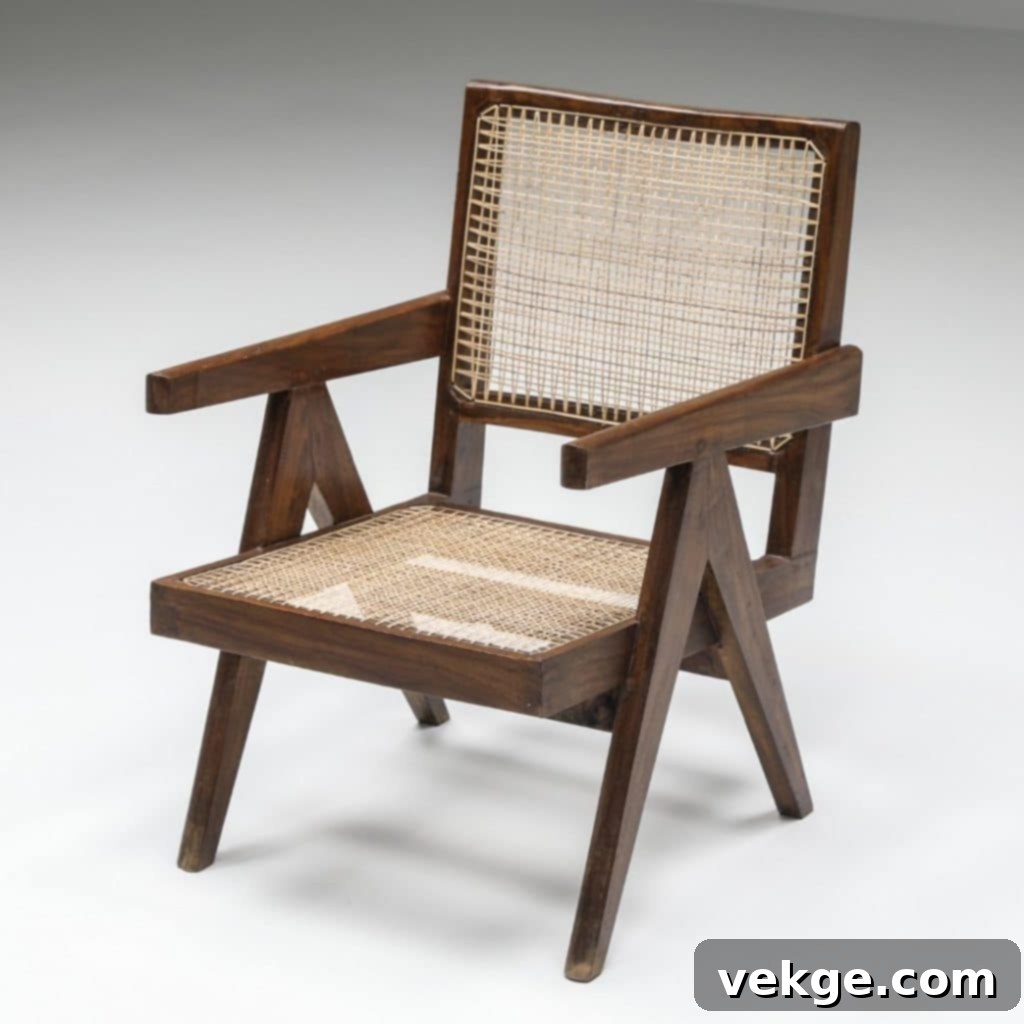
The defining characteristics of Jeanneret’s Chandigarh furniture collection include:
- Local Materials: Jeanneret famously utilized locally sourced Indian teak wood, a material perfectly suited for the region’s hot and humid climate due to its natural resistance to insects and moisture. He also incorporated other local resources like bamboo, iron rods, and cotton for upholstery and caning.
- Local Craftsmanship: Rather than importing skilled labor, Jeanneret empowered and employed local artisans and craftsmen from Chandigarh. This not only provided employment but also integrated traditional Indian woodworking and weaving techniques into his modernist designs, fostering a unique blend of European modernism and local heritage.
- Functional Simplicity: Reflecting the core tenets of his and Le Corbusier’s architectural philosophy, the chairs were designed with an emphasis on efficiency and clean lines over elaborate ornamentation. They were sturdy, robust, and built to withstand daily use in public institutions.
- The V-Shaped Leg: Perhaps the most recognizable feature is the inverted V-shaped or compass-shaped leg structure. This design was not merely aesthetic; it provided exceptional stability and strength while maintaining a light, airy visual profile. This distinctive silhouette became synonymous with the entire Chandigarh collection, which included various chair types like Easy Chairs, Office Chairs, Dining Chairs, and Lounge Chairs.
- Cane Weaving: The use of woven cane for the seat and backrest was a brilliant adaptation to the tropical climate. It allowed for ventilation, making the chairs comfortable even in high temperatures, while also being durable and relatively easy to repair using local skills.
From Obscurity to Global Icon: The Rise to Fame
Despite their innovative design and practical functionality, many of Jeanneret’s chairs, along with other pieces of Chandigarh furniture, were largely forgotten and left to deteriorate as the city aged. By the 1980s and 90s, countless pieces were deemed obsolete and either discarded, left to rot, or sold in local auctions for incredibly low prices, often for mere pennies.

The chairs’ fortunes began to change when discerning European designers and antique dealers discovered these “understated masterpieces” on the streets and in markets of Chandigarh. Recognizing their artistic and historical value, they started acquiring and exporting them to the West for refurbishment. Soon, these once-abandoned chairs began appearing in prestigious design magazines, art galleries, and upscale interiors. Their minimalist aesthetic, sustainable material usage, and fascinating backstory resonated deeply with a new generation of collectors, interior designers, and minimalist enthusiasts. Suddenly, the Pierre Jeanneret chair transformed from a forgotten utility item into a global design sensation, a symbol of sophisticated, understated luxury and mid-century modern elegance, particularly beloved in celebrity homes and high-end design spaces.
Where to Find Authentic and Inspired Pierre Jeanneret Chairs
If you’re captivated by the timeless charm of Pierre Jeanneret’s designs and wish to incorporate them into your home decor, you have several avenues to explore. The market offers both painstakingly restored original pieces and high-quality contemporary replicas, catering to various budgets and preferences. Below, we’ve curated a guide to help you navigate the options and find the perfect Jeanneret-inspired piece for your space.
Investing in History: Original Pierre Jeanneret Chairs
For serious collectors and connoisseurs of vintage design, acquiring an original Pierre Jeanneret chair is an investment in a tangible piece of design history. These chairs possess a unique patina and provenance that cannot be replicated. When seeking an original, it’s crucial to look for reputable dealers who specialize in mid-century furniture and can provide authentic documentation. The value of these chairs lies not only in their design but also in their story and the fact that they were part of the historic Chandigarh project.

Some of the most respected platforms and dealers for authentic Pierre Jeanneret chairs include:
- 1stDibs: Renowned for its curated collection of high-end antique and vintage furniture, 1stDibs often features original Jeanneret chairs sourced from around the globe. While prices reflect their authenticity and rarity, it’s a prime destination for serious buyers.
- Dimo Chairs: A specialist dealer known for meticulously restored original Chandigarh furniture. They pride themselves on preserving the structural integrity and historical character of each piece, offering a selection that often includes various models of the iconic chairs.
When buying originals, always inquire about the chair’s history, restoration process, and any available certificates of authenticity to ensure you’re making a genuine investment.
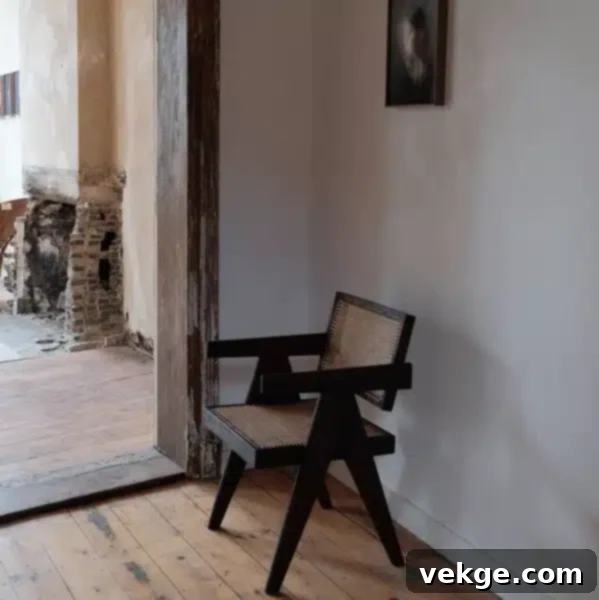
Embracing the Design: High-Quality Pierre Jeanneret Replicas and Inspired Designs
Given the scarcity and high cost of original Jeanneret chairs, the market for high-quality replicas and inspired designs has flourished. These reproductions offer an accessible way to introduce the iconic mid-century aesthetic into your home without the significant investment. A good replica will faithfully reproduce the distinctive V-shaped legs, cane work, and overall proportions of the original, using quality materials to ensure durability and aesthetic appeal. Many designers and manufacturers now produce excellent interpretations that capture the essence of Jeanneret’s vision.
Here are several excellent online retailers where you can find Pierre Jeanneret-inspired chairs and high-quality replicas:
Etsy.com
Etsy, a global marketplace primarily focused on handmade and vintage items, is a treasure trove for Jeanneret-inspired furniture. Numerous independent artisans and workshops offer their interpretations of the Chandigarh chair, often allowing for customization in wood finish, cane color, or upholstery. This platform provides an opportunity to support smaller businesses while finding unique, handcrafted pieces that faithfully capture the spirit of the original at a more accessible price point.

Wayfair
Wayfair, a leading e-commerce giant for home goods and furniture, offers a vast selection of Jeanneret-inspired pieces. From dining chairs to lounge armchairs with various finishes and material combinations, Wayfair makes this iconic design accessible to a broad audience. Their extensive inventory and competitive pricing mean you can often find variations that fit specific decor styles while maintaining the recognizable silhouette of the Chandigarh chair.

Scout and Nimble
Scout and Nimble is celebrated for its specially curated collections of high-end furniture and home decor, often favored by interior designers for sourcing unique pieces. Their Jeanneret collection stands out for its quality and attention to detail, offering sophisticated replicas that embody the refined aesthetic of the original designs. If you’re looking for well-crafted interpretations with a designer-approved touch, Scout and Nimble is an excellent resource.

France and Son
Specializing in mid-century modern furniture and decor, France and Son is an ideal destination for finding quality Jeanneret-inspired pieces. Their collection often features faithful reproductions that blend seamlessly with other vintage-inspired or contemporary furnishings. Integrating these chairs into your home from a specialist like France and Son allows you to add a distinctive character and a touch of sophisticated nostalgia to your interiors.
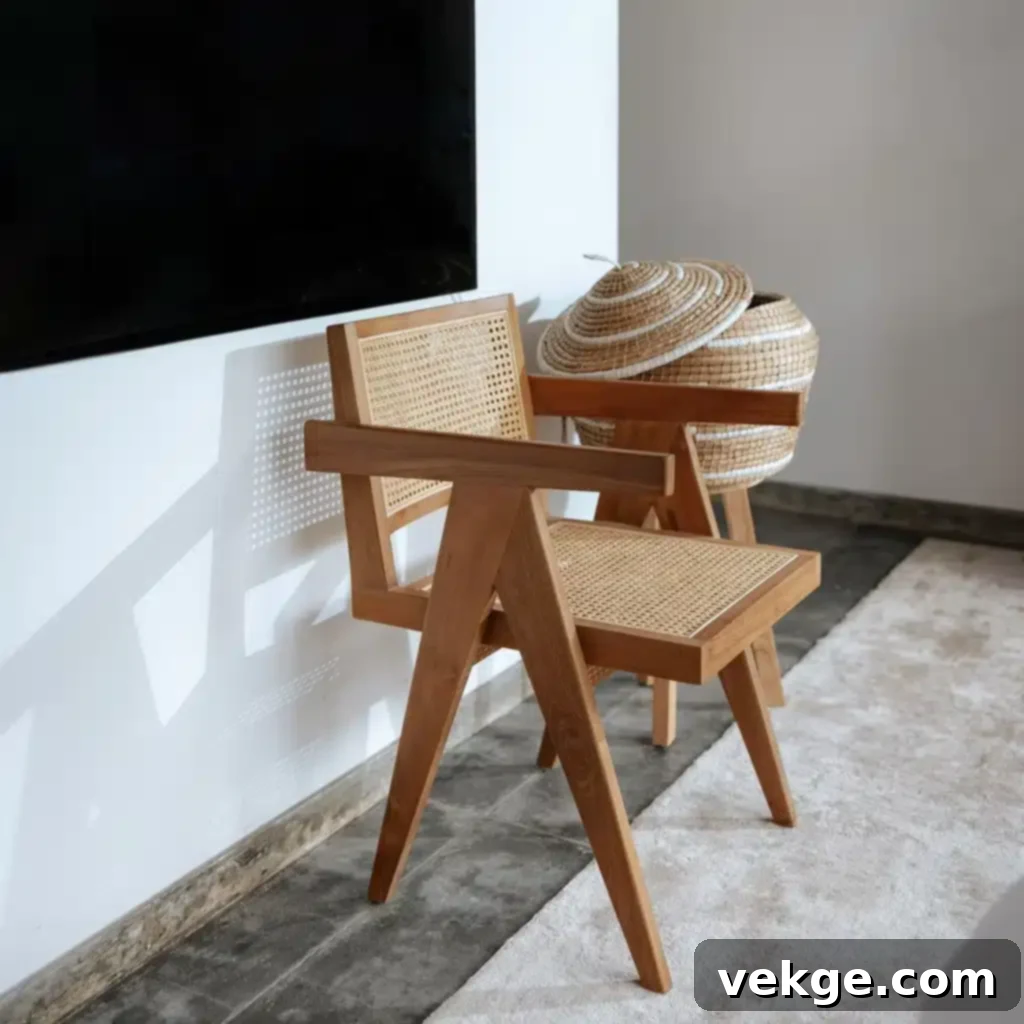
Arhaus
Arhaus is known for designing and selling high-quality home furnishings, including many pieces inspired by classic designs. While they may not explicitly label items as “Jeanneret,” their collections often feature chairs like the “Kroy Cane Back Dining Armchair” which clearly draws inspiration from the mid-century modern aesthetic and Jeanneret’s functional elegance. Exploring their offerings can reveal a perfect blend of comfort, style, and homage to classic design principles for your living or dining space.
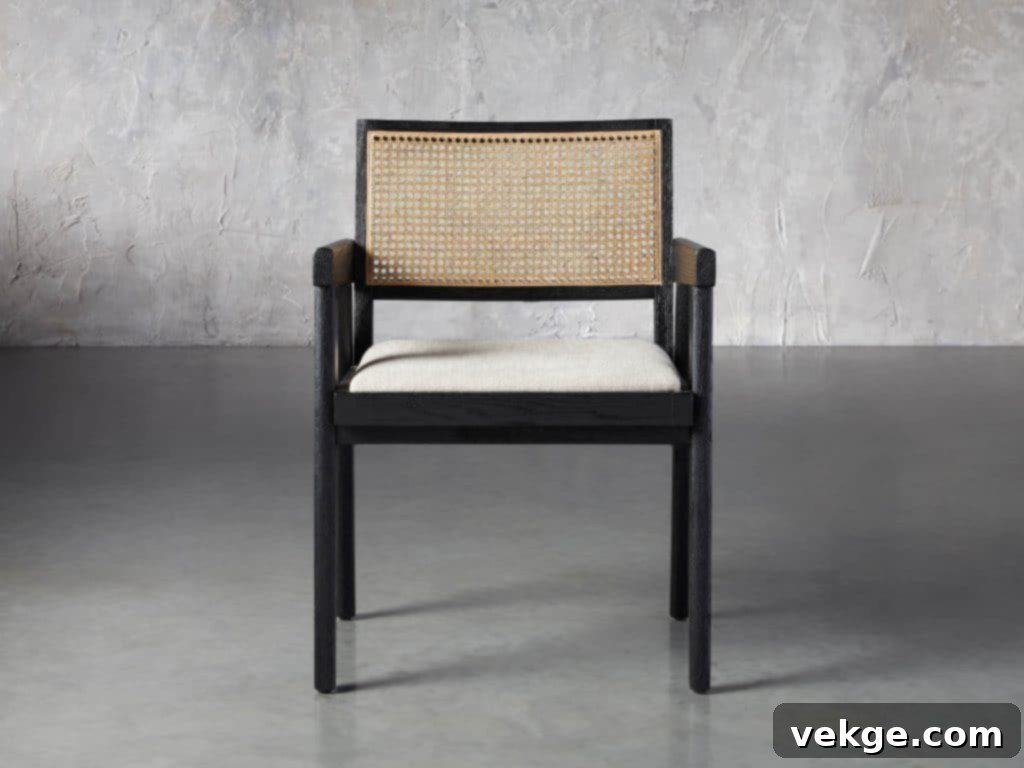
Rejuvenation
While Rejuvenation is highly regarded for its lighting and hardware, their furniture collection also features pieces that echo the timeless appeal of mid-century design. For instance, their “Tuttle Leather and Caned Lounge Chair” showcases a striking resemblance to the Jeanneret aesthetic, combining rich materials with classic cane details and a minimalist form. It’s an excellent option for those seeking a sophisticated lounge chair with a nod to iconic design.
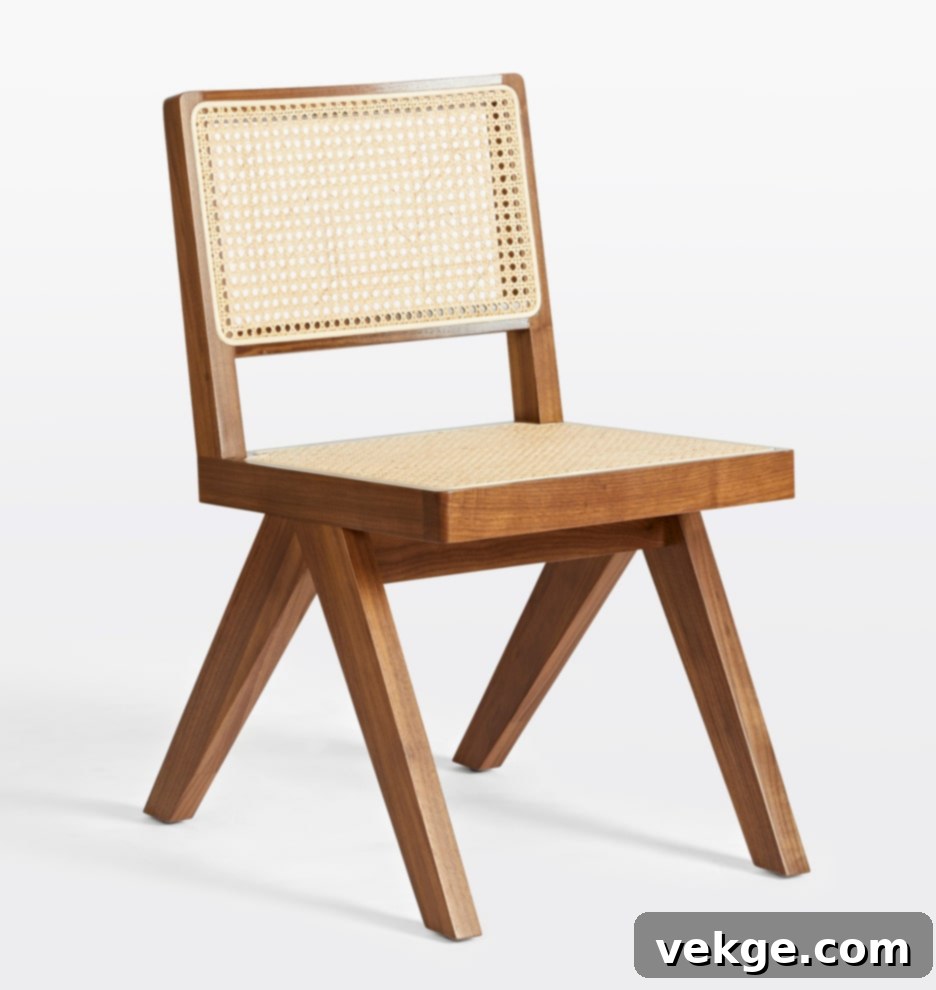
Target
Surprisingly, even major retailers like Target have embraced the popularity of the Jeanneret chair. For budget-conscious shoppers, Target often carries surprisingly stylish and affordable options that are clearly inspired by the Chandigarh aesthetic. While they may not be exact replicas, they offer a similar vibe and are an excellent way to introduce a touch of mid-century modern elegance into your home without breaking the bank. Keep an eye on their home decor collections, especially under their own design-focused brands.
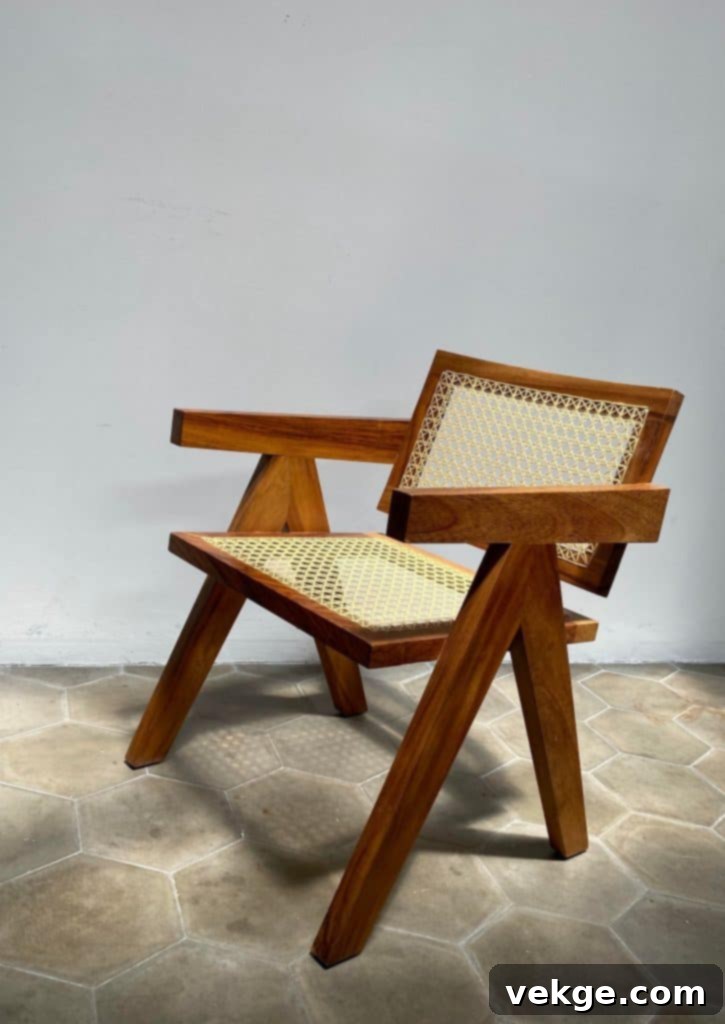
Amazon
As the ultimate online marketplace, Amazon truly has everything, including a wide array of Pierre Jeanneret-inspired chairs. You can find numerous sellers offering various styles, from dining chairs to accent chairs, often with competitive pricing and diverse material options. While the quality can vary, reading reviews and carefully checking product descriptions can help you discover some fantastic mid-century modern pieces to elevate your home decor with convenience.
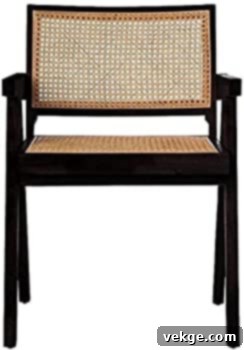
The Enduring Appeal of a Design Masterpiece
Pierre Jeanneret’s journey from a Swiss architect collaborating on groundbreaking urban plans to the creator of one of the most beloved furniture designs of the 20th century is truly remarkable. His chairs are more than just seating; they are a testament to his commitment to functionalism, sustainability, and the harmonious integration of design with its environment. The ingenious use of local materials, the distinctive V-shaped legs, and the comfortable cane weaving all contributed to a design that was revolutionary for its time and remains profoundly relevant today.
The sudden escalation in demand for these minimalist and modern chairs highlights their timeless appeal and versatility. They effortlessly complement a wide range of interior styles, from classic to contemporary, adding a touch of sophisticated simplicity that resonates with anyone who appreciates thoughtful design. Whether you dream of owning a piece of authenticated history or wish to infuse your home with the iconic aesthetic through a high-quality reproduction, the market offers abundant possibilities. We hope this comprehensive guide inspires you to explore the legacy of Pierre Jeanneret and find the perfect chair to enrich your living space.
